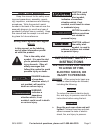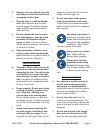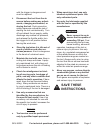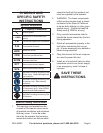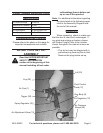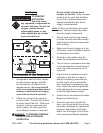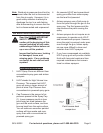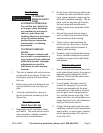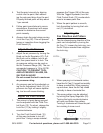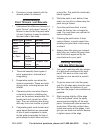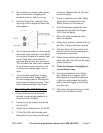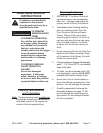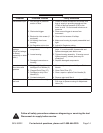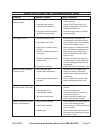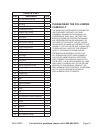
SKU 66222 For technical questions, please call 1-800-444-3353. Page 9
Tool Set Up
TO PREVENT
SERIOUS INJURY
FROM
ACCIDENTAL OPERATION:
Turn off the tool, detach the
air supply, safely discharge
any residual air pressure in
the tool, and release the
throttle and/or turn the trigger
to its off position before
performing any inspection,
maintenance, or cleaning
procedures.
TO PREVENT SERIOUS
INJURY:
Do not adjust or tamper with
any control or component in a
way not specically explained
within this manual. Improper
adjustment can result in
tool failure or other serious
hazards.
This tool is treated with anti-corrosive 1.
compounds at the factory. Flush it out
thoroughly with paint thinner before
rst use.
Before using check all fasteners and 2.
air connections to be sure they are
tight.
To avoid contamination, blow out 3.
the air line before connecting to the
Spray Gun.
Work Piece and
Work Area Set Up
Designate a work area that is clean 1.
and well-lit. The work area must not
allow access by children or pets to
prevent injury and distraction.
Route the air hose along a safe route 2.
to reach the work area without creat-
ing a tripping hazard or exposing the
air hose to possible damage. The air
hose must be long enough to reach
the work area with enough extra
length to allow free movement while
working.
Secure loose work pieces using a 3.
vise or clamps (not included) to pre-
vent movement while working.
There must not be hazardous ob-4.
jects (such as utility lines or foreign
objects) nearby that will present a
hazard while working.
Prepare a well ventilated work space. 5.
Use a ventilator designed to prevent
inhalation of paint and volatile uids
and gasses.
Prepare the paint
Due to the high viscosity of latex and 1.
most water based paints, they are not
generally recommended for HVLP
painting. Check with the paint manu-
facturer for specics.
In most cases, the paint must be 2.
thinned for spraying. Only use the
thinner recommended by the paint
manufacturer. If the paint is too thick,
you will get a thick, orange-peel n-
ish, and the sprayer may clog. If the
paint is too thin, you will get poor cov-
erage, drips and runs, and excessive
drying of the paint in the air.
Proper thinning varies with the mate-3.
rial being used and local temperature
and humidity. In most cases, thinning
will be approximately 10% and not
more than 30%.




